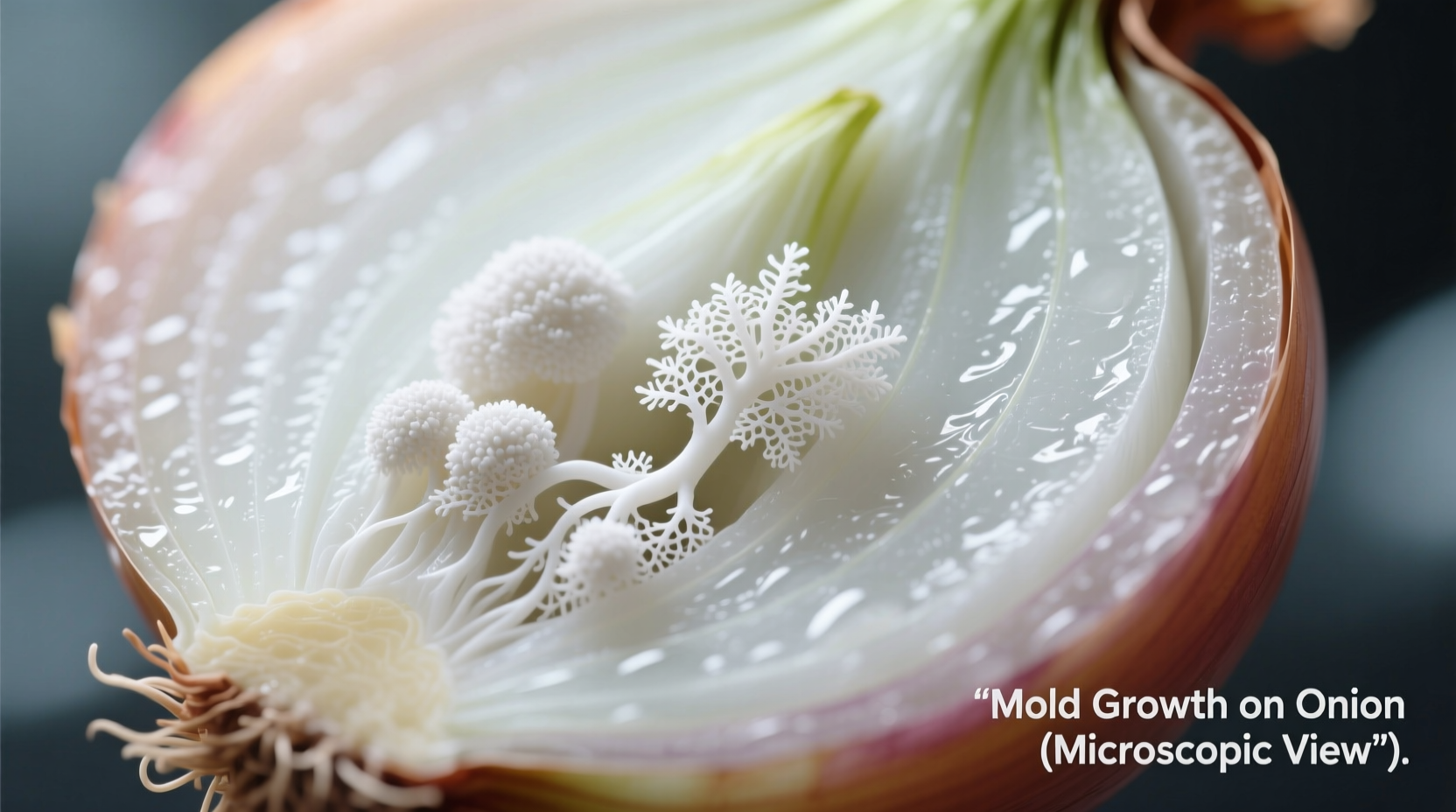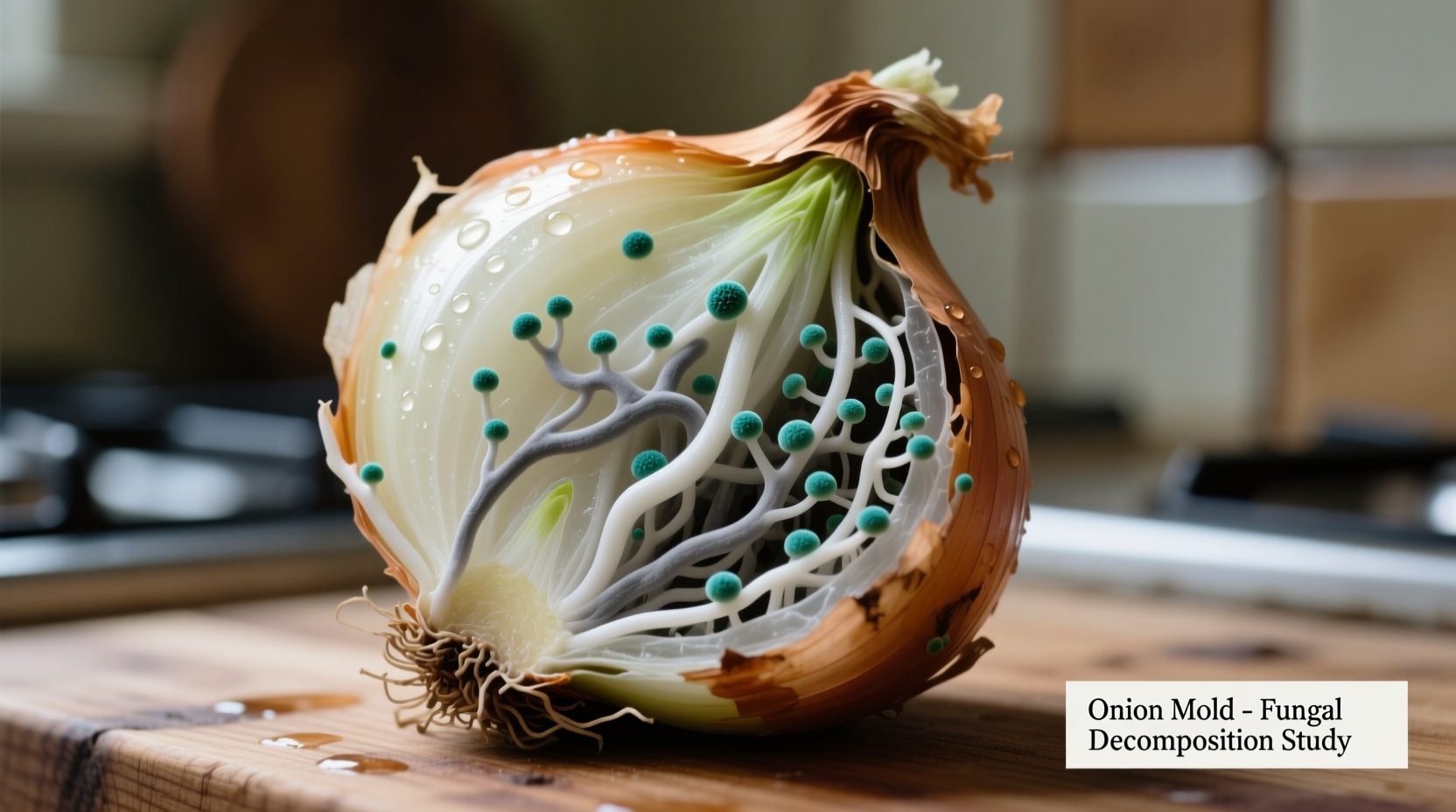If you've discovered mould on your onions, here's what you need to know immediately: Mould on onions is typically caused by fungi like Penicillium and Aspergillus species. When found early, you can often salvage the unaffected portions by cutting away at least 1 inch around and below the mouldy spot. However, if the mould has penetrated deeply, the onion feels soft, or shows extensive discolouration, it's safest to discard the entire onion. Never consume onions with visible mould that have a musty smell or slimy texture.
Discovering mould on your onions can be frustrating, especially when you're meal prepping or cooking. As someone who's spent years studying food preservation techniques and spice interactions in European culinary traditions, I've seen how proper handling makes all the difference. In this guide, you'll learn exactly how to identify different types of onion mould, when it's safe to salvage your onions, and most importantly—how to prevent mould from developing in the first place.
Understanding Onion Mould: What You're Really Dealing With
Onion mould isn't just unsightly—it's a sign of fungal growth that can compromise both safety and flavor. The most common culprits are Penicillium species (blue or green mould) and Aspergillus species (black or grey mould). These fungi thrive in humid conditions and can spread rapidly through onion layers.
Unlike surface mould on hard cheeses or firm vegetables, onion mould presents unique challenges because of the vegetable's layered structure. Mould spores can penetrate between layers without visible surface indication, making thorough inspection essential.

Identifying Different Types of Onion Mould
Not all mould appears the same. Recognizing the specific type helps determine appropriate action:
| Mould Type | Appearance | Risk Level | Recommended Action |
|---|---|---|---|
| Penicillium | Blue-green, powdery spots | Moderate | Salvage possible if caught early |
| Aspergillus | Dark grey to black, fuzzy growth | High | Discard entire onion |
| Fusarium | White to pink, spreading rapidly | High | Discard immediately |
| Cladosporium | Olive-green, velvety texture | Moderate | Salvage possible with deep cutting |
When Is It Safe to Salvage Mouldy Onions?
The USDA Food Safety and Inspection Service provides clear guidance on when to save versus discard mouldy produce. For firm vegetables like onions, you can often salvage unaffected portions—but with critical caveats:
- Surface-level mould (small spots on outer skin): Peel away affected layers plus 1 inch beyond visible mould
- Deeply penetrated mould (visible between layers): Discard entire onion
- Soft or mushy texture accompanying mould: Discard immediately
- Musty odors without visible mould: Indicates internal spoilage—discard
Remember that mould produces invisible roots that can extend far beyond what's visible. When in doubt, throw it out—especially for those with compromised immune systems.
The Science Behind Onion Mould Development
Understanding the timeline of mould development helps prevent waste. Research from the University of California's Agriculture and Natural Resources department shows how quickly mould can compromise onions:
| Timeframe | Visible Changes | Action Required |
|---|---|---|
| 0-24 hours | No visible changes | Store properly immediately |
| 24-48 hours | Small white spots appear | Use immediately or cut away affected areas |
| 48-72 hours | Spots grow, color changes to blue/green | Discard if spots connect or penetrate layers |
| 72+ hours | Extensive coverage, soft spots develop | Discard entire onion |
Proven Storage Techniques to Prevent Onion Mould
Prevention beats remediation every time. Based on my research into traditional European storage methods combined with modern food science, these techniques significantly extend onion shelf life:
Optimal Storage Conditions
- Ventilation is critical: Store in mesh bags or open baskets, never sealed plastic
- Ideal temperature: 45-55°F (7-13°C)—cooler than room temperature but above refrigerator levels
- Humidity control: 65-70% humidity prevents both mould and premature drying
- Separation: Keep onions away from potatoes which emit moisture-promoting gases
Advanced Preservation Methods
For longer storage, consider these professional techniques:
- Curing before storage: Dry onions in warm, well-ventilated area for 2-3 weeks before long-term storage
- Layering with natural inhibitors: Place onions between layers of dried mint or bay leaves which contain natural antifungal compounds
- Vacuum sealing for cooked onions: Only for already-cooked onions, never raw
Common Misconceptions About Onion Mould
Several persistent myths lead to unnecessary waste or potential health risks:
- Myth: "If I cut off the mould, the rest is fine"
Reality: Mould roots extend beyond visible areas—always cut deeper than what you see - Myth: "Refrigeration prevents all mould"
Reality: Cold temperatures slow but don't stop mould; high refrigerator humidity can actually accelerate growth on some varieties - Myth: "Organic onions mould faster"
Reality: Mould development depends on storage conditions, not farming methods—studies from the Journal of Food Protection show no significant difference in mould resistance
When Onion Mould Becomes a Health Concern
While most mould on onions poses minimal risk to healthy individuals, certain situations warrant caution:
- Immunocompromised individuals should avoid all mouldy produce
- Visible mycotoxins (yellow, pink, or black streaks) indicate potentially harmful compounds
- Musty odors without visible mould suggest internal contamination
The European Food Safety Authority notes that while Penicillium species common on onions rarely produce dangerous mycotoxins in household conditions, the risk increases significantly when mould is allowed to develop over several days.
Practical Steps When You Discover Mould
Follow this immediate action plan when you find mould on your onions:
- Isolate the affected onion from others immediately
- Inspect thoroughly under good lighting, checking between layers
- Assess texture—discard if soft or mushy anywhere
- Cut generously—remove at least 1 inch around and below visible mould
- Store remaining portion properly and use within 24 hours
- Sanitize all surfaces and tools that contacted the mouldy portion
Remember that prevention is always preferable. By implementing proper storage techniques from the moment you bring onions home, you'll significantly reduce mould incidents and food waste.











 浙公网安备
33010002000092号
浙公网安备
33010002000092号 浙B2-20120091-4
浙B2-20120091-4